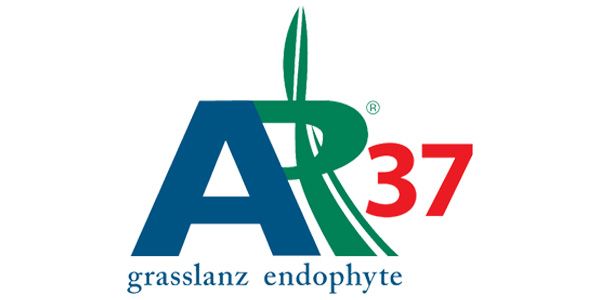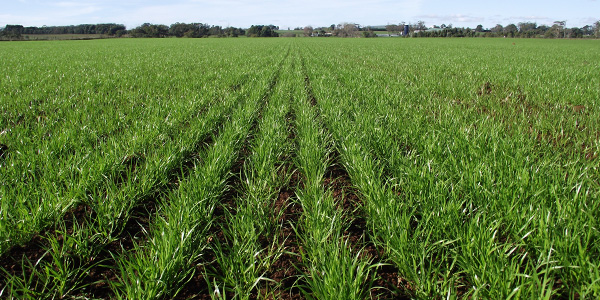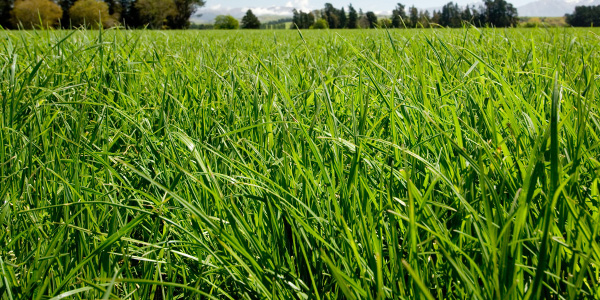
Endophytes
Endophytes
Importance of Endophyte and Endophyte Selection
Endophyte is extremely important to farmers as it has a dramatic effect on the persistence and production of ryegrass pastures in most regions of New Zealand. There are now several novel endophytes available, and each can provide different levels of insect protection and effects on grazing animals.
At Agricom, we market the AgResearch novel endophytes AR1 and AR37 in most of our ryegrass cultivars and MaxP® endophyte in our tall fescue cultivars, as well as providing low endophyte (LE) options. AgResearch novel endophytes are thoroughly developed and tested with world-renowned science, with emphasis placed on testing effects on animals, insects, pasture production and persistence.
Ryegrass Endophytes - Insects
Where insect pressures are low, AR1 is an excellent option for animal health and production and provides good pasture persistence in many regions. AR37 is increasingly being used in regions where other endophytes are not providing enough insect protection; these insects negatively affect pasture persistence and production. AR37 provides ryegrass the best long term, natural protection to porina and root aphid, along with other common insects (see Table 3 alongside). Several trials have confirmed both pasture production and persistence advantages AR37 over AR1 and standard endophyte.
Does AR37 Protect Against Porina?
AR37 is the only novel endophyte that gives proven ryegrass protection against porina caterpillars. It has three stars on the insect control table indicating that it provides good control. AR37 markedly reduces insect damage under low to moderate porina pressure. Damage may still occur when porina pressure is high. Moderate pressure occurs at levels up to approximately 100 porina/m2 or 4 porina per standard spade. Pasture production is reduced when 20 - 40 porina/m2 are present. At this level they consume the equivalent amount of drymatter as 1 SU. Higher porina numbers cause plant deaths in unprotected pastures. At 100 porina/m2 and greater, high to extreme pressure is exerted on the pasture which AR37 alone cannot protect against. In situations of high to extreme pressure, look at possible chemical control options and talk to your local seed retailer.
No endophyte prevents porina moths laying eggs in pasture. In mixed pastures other plants may provide a safe feed source and this means porina are often found at low levels in pastures based on AR37 ryegrass, but the endophyte is still working and will deter and poison the caterpillars. No other ryegrass endophyte provides this level of protection against porina.
Ryegrass Endophytes - Animals
Animal performance of both sheep and milk production in dairy cows is the same when stock are fed perennial ryegrass with AR37, when compared with AR1 or nil endophyte. The combination of the insect tolerance and persistence advantages makes AR37 a valuable technology for many farmers.
AR37 can cause ryegrass staggers. In ryegrass with AR37, trials have shown that on average the frequency, duration and severity of ryegrass staggers is less than for standard endophyte. However on occasions sheep (and potentially other animals) grazing AR37 ryegrass may be severely affected. After many years of use on commercial dairy farms, ryegrass staggers have not been observed in dairy cows on-farm to date. AR37 varieties should not be used on properties grazing either deer or horses. For more information on animal health and performance (see Endophytes - Animal Safety).
Seed Storage
When using ryegrass seed with endophyte, it is important to plant the seed whilst it still has a good percentage of the seed’s endophyte, as all endophytes can die in seed if stored for too long, especially in warm/moist environments. Agricom has a rigorous testing and storage policy for endophyte seed to ensure adequate endophyte levels. Farmers also need to be aware of the length of time and storage conditions between purchase and planting.
MaxP® endophyte
MaxP® is a tall fescue novel endophyte that produces peramine and loline alkaloids which give an increased level of insect tolerance, increasing the production and persistence of tall fescue. MaxP® is available in Hummer and Haven tall fescue. MaxP® endophyte offers protection against black beetle adult, root aphid and field cricket.
MaxR® endophyte
MaxR® is a naturally occuring endophyte Neotyphodium uncinatum, part of an endophyte family that produces the alkaloid loline. Lolines are found in above ground material of the plant but also in large concentrations in the roots where it can influence a range of insects. Oakdon meadow fescue is a New Zealand bred meadow fescue which contains the loline-producing endophyte MaxR®. Meadow fescue endophytes are known to act as a grass grub deterrent.

Learn more about AR37
AR37 Endophyte



